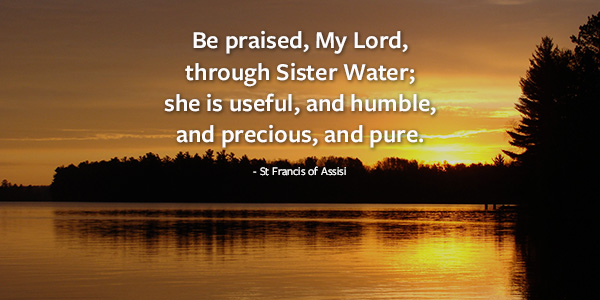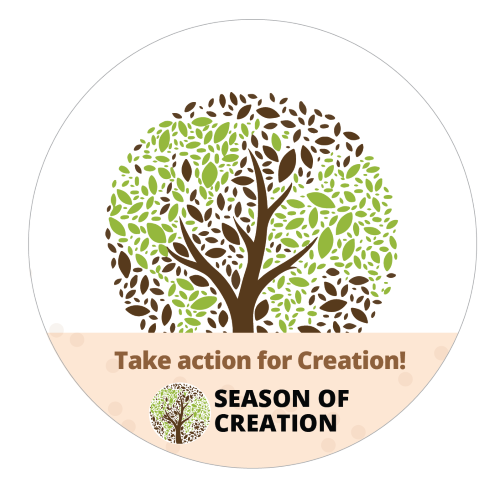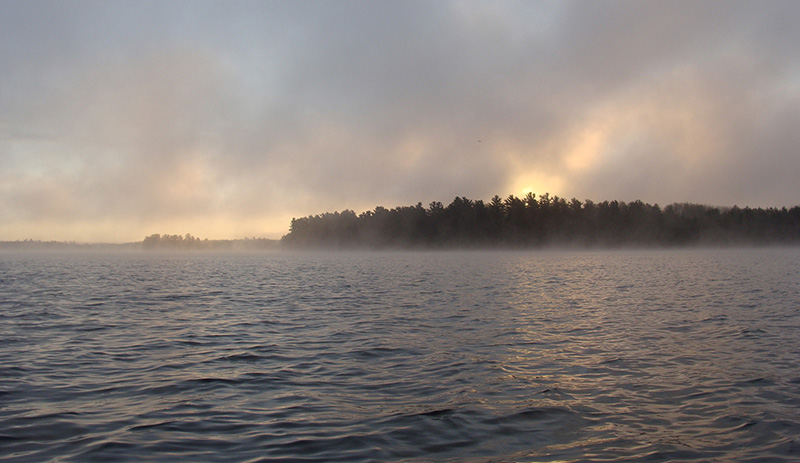Who is my Sister?
By Sister Roselyn Heil
Which of our sisters should we ignore, use as we will and discard when we have contaminated her from her pure gift of self? This question hopefully stirs thoughts and feelings inside us, such as, “How can you say and think this way about your sister?”
Unfortunately, we treat many of our sisters and brothers in this way. In Jesus' time, people asked, “Who is my neighbor?” Jesus moved the bar from cousins to all people. St. Francis of Assisi translated that very same question: “Who are my sisters and brothers?” He moved the bar from family to all Creation as sisters and brothers.
Given all of this, what is our relationship with our Sister Water?
Have you ever sat in a small boat on a lake, watching, feeling, listening and flowing with the gentle rhythm of the waves coming in to shore and back, when suddenly a power boat zooms around a bend into your cove? It zooms out again, as if it were the only one of importance, creating its own waves that crash into the cove. It throws everyone out of rhythm as each part of the cove — water, shore and boat — shifts with the invasion. After a while, you gradually return to the natural rhythm of water with land, your boat and you.

We humans, in many ways like that power boat, are oblivious to our relationship and connection with all Creation. We even use a word for the rest of Creation — nature — when referring to that Other as though we are not a part of the whole. We have forgotten that we ourselves are made of Earth (Genesis 2:7). We breathe in her Spirit and eat of our Earth brothers and sisters: flowers, plants and animals. Some we step on or swat as though it is ours to determine who lives and who doesn’t. I digress. Back to Sister Water. Her gift to the Body of Christ is her fluidity and interconnection with the whole. As adults, our bodies, as well as Earth’s surface, are at least 70% water; thus we already resonate with water. We too have the potential to be flexible and malleable.
When I was young, family and friends would visit and declare our water to be the best water they had ever had. She was clear and had no taste. So perfectly she receives others and takes on different tastes and fragrances — or bitterness. Water also absorbs and carries our emotions. Water, in her malleability, takes on the form of the vessel which receives her. She picks up messages and residues of gift and poison along her journey back to the sea.
David R. Brower, considered by many to be the father of the modern environmental movement in the United States, says, “We must begin thinking like a river if we are to leave a legacy of beauty and life for future generations.” When water ripples over rocks or through an area of cattails in a stream, without the continual re-feeding of poisons and toxins for even as little as 500 feet, she is able to release and purify herself. Removal of phosphorus is just the tip of the water-pollution iceberg that could be solved by cattail plant preservation. Cattails are associated with remediating sites contaminated with arsenic, pharmaceuticals and even explosives. Cattails can even help prevent excess methane emissions from degraded wetlands. Together, we have what we need to purify our blood/water stream of Earth’s body.
As we turn on a faucet for water to flow down the drain or over our hands, have we become so absentminded that we have lost a sense of respect for where water has come from or where water is going?
The powerful words of Shozo Tanaka (1841 to 1913), a Japanese politician and social activist considered to be his country’s first conservationist, still continues to challenge us: “The sewer is the conscience of the city. The care of rivers is not a question of rivers but of the human heart.”
His sentiment flows into Ecclesiastes 1:7: “Into the sea all the rivers go, and yet the sea is never filled, and still to their goal the rivers go.”
Meister Eckhart, in this translation by Matthew Fox, continues: “All creatures flow and return to their source, Creator of heaven and earth … What is created flows out but remains within. So, when we return to our first origin ... we discover our freedom and are free.”
As we recognize our kinship with all Creation, we open ourselves to flow to the sea, Our Source, as far as our creativity will take us.

The Christian family is uniting for the annual worldwide celebration of prayer and action to protect our common home — Season of Creation — Sept. 1 to Oct. 4. The theme for Season of Creation 2020 is Jubilee for the Earth.
Take action:
Learn about the history of the celebration in “What is the Season of Creation?”
Mark your calendar with global participation opportunities in the month of September. Visit seasonofcreation.org for a schedule of events, including webinars and information about World Day of Migrants and Refugees, Sept. 27.
Join Sister Meg Earsley in “Embracing Creation,” a four-session virtual celebration, Sept. 6, 13, 20 and 27, of Jubilee of the Earth.
Watch “The Healing Power of Love in Action,” which includes a reading of “Canticle of the Creatures Explained” by Sister Sarah Hennessey.
Download the Season of Creation prayer card.
Also in the September 2020 e-edition of Presence:
FSPA welcomes Sister Michele Pettit into first profession
How COVID-19 opened hearts
Walking, virtually, with women discerning religious life
The path to racial solidarity
Jubilee celebrations



